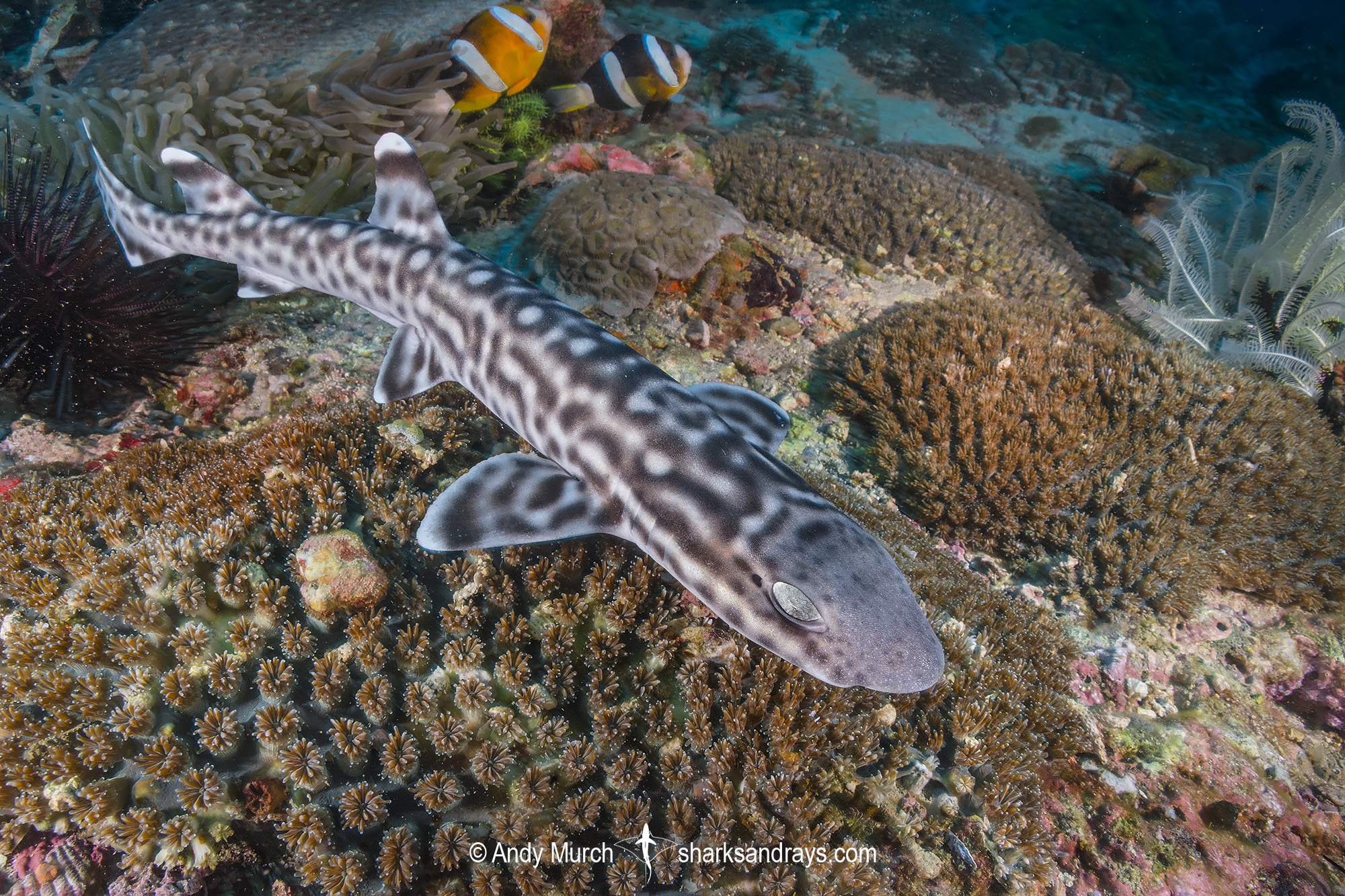Common names
Coral Catshark.
Binomial
Atelomycterus marmoratus.
Synonyms
Ateleomycterus marmoratum, Atelomycterus marmoratum, Scyllium maculatum, Scyllium marmoratum, Scyllium pardus.
Identification
Long, slender body. Snout short and rounded. Mouth width greater than snout length. Lower labial furrows reach mouth cavity. Greatly enlarged nasal flaps extend rearward from nares to mouth. First dorsal fin origin level with midpoint of pelvic fin base. Second dorsal fin origin level with midpoint of anal fin base. First and second dorsal fins of roughly equal size, with rounded apexes. Lower caudal lobe indistinct. Dorsal coloration a striking pattern of bold black and white spots and blotches on a grey or grey-brown base. Fins usually have bold white tips/margins.
Size
Maximum length 70cm. Size at birth 10-13cm.

Conservation Status
NEAR THREATENED
The coral catshark (Atelomycterus marmoratus) is a bycatch species in demersal trawl, longline, and gillnet fisheries throughout its range and is retained for human consumption.
The relative abundance of this species in catch data may indicate some resilience to fishing pressure, probably due to the coral catshark’s preference for rocky or coral habitat where large scale fishing gear cannot be deployed.

Habitat
A tropical catshark species inhabiting crevices in shallow coral reefs. From 5-100m.
Distribution
The coral catshark is found from the coast of India, eastward throughout much of southeast Asia.
Reproduction
Oviparous. Lays paired egg cases.
Diet
The coral catshark feeds on molluscs, crustaceans, as well as small fishes.
Behavior
Rests in deep crevices in the reef during the day. Forages on the reef at night, using it’s eel-like body to wriggle into small openings.
Reaction to divers
Usually quite shy, retreating deeper when disturbed inside crevices in the reef. Sometimes comes to rest in plain view, allowing close examination and photo ops. Not known to respond to bait.
Diving logistics
Although quite secretive, coral catsharks are fairly common on many reefs in southeast Asia that are too numerous to list here.
I have seen more coral catsharks while diving around Malapascua Island in the Philippines than anywhere else, but that may be just because on one trip, I was specifically looking in every crevice and under every coral head for catsharks and bamboo sharks.
There appear to lots of sightings from Lembeh Strait off Sulawesi but that may simply be because there is a disproportionately high number of photographers that go there.
Anywhere that you are aware coral catsharks occur, the best way to find one is to bring a good dive light and look in every crevice, and under every overhang on the dive. Remember to be careful of the fragile reef during your search.
Similar species
Spot-belly Catshark Distinguished by prominent white spots within broken dark rings on flank, and spots on underside.
Australian Marbled Catshark Distinguished by more uniform light saddles and smaller black spots on a light brown base. Probably confined to northwestern Australia.
Bali Catshark Distinguished by subtle saddles and small black spots with light centres. Known only from Bali.



